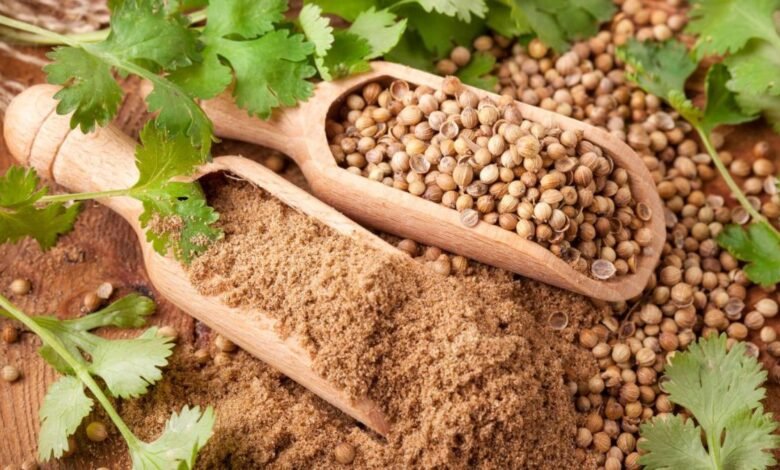The Ultimate Guide to Koriandri: Unlocking the Secrets of This Aromatic Herb

If you’ve ever stepped into a kitchen that’s filled with the rich, citrusy aroma of freshly ground spices, you may have encountered koriandri (also known as coriander). This versatile herb is a key ingredient in many cuisines around the world, from Indian curries to Mexican salsas. But there’s more to koriandri than meets the eye—its health benefits, culinary uses, and cultural significance make it a true kitchen powerhouse.
In this guide, we will explore everything you need to know about koriandri, including its culinary uses, health benefits, and tips on incorporating it into your diet.
What is Koriandri?
Koriandri, or coriander, is a herb native to regions spanning from Europe to North Africa and Asia. It is famous for its fragrant leaves and its seeds, both of which are used extensively in cooking. The fresh leaves are often referred to as “cilantro,” while the dried seeds are called “coriander seeds.” While many people use these terms interchangeably, it’s essential to know the distinction between the two when exploring their uses.
The Two Faces of Koriandri: Cilantro and Coriander Seeds
Cilantro – The Fresh Herb
Cilantro, also known as coriander leaves, is bright green with delicate, feathery leaves. The flavor of cilantro can be described as fresh, citrusy, and a bit pungent. However, its flavor can be polarizing. Some people adore it, while others find it soapy or overly bitter due to a genetic variation. Regardless of your opinion on cilantro, there’s no denying its versatility in various dishes like salsa, salads, and curries.
Coriander Seeds – The Spicy Seeds
On the other hand, coriander seeds have a warm, spicy, and slightly citrusy flavor. When dried, the seeds are often ground into powder, which is a fundamental component in spice blends like garam masala. The seeds are also used in pickling, baking, and even brewing certain types of beer.
The Health Benefits of Koriandri
Koriandri isn’t just about its flavor; it also boasts a number of health benefits that have been praised by health enthusiasts for centuries. Whether you’re adding cilantro to a fresh salad or incorporating coriander powder into your favorite curry, you’re also adding a nutritional powerhouse to your meal.
1. Rich in Antioxidants
Koriandri is packed with antioxidants, which help neutralize harmful free radicals in the body. These compounds contribute to reducing inflammation and promoting overall well-being. Studies have shown that coriander may support heart health by reducing oxidative stress.
2. Supports Digestive Health
Both cilantro and coriander seeds are believed to support digestion. Coriander seeds are known to have digestive properties, including soothing an upset stomach and improving bowel movements. Cilantro also contains essential oils that stimulate the production of digestive enzymes, helping break down food more efficiently.
3. Contains Anti-Inflammatory Properties
Coriander is known for its anti-inflammatory effects. Regular consumption of koriandri may reduce symptoms of inflammatory conditions like arthritis. The compounds found in coriander help alleviate pain and swelling, providing a natural remedy to manage chronic inflammation.
4. Helps Control Blood Sugar Levels
For those with diabetes, coriander may be a beneficial addition to the diet. Some studies have suggested that coriander seeds can help lower blood sugar levels by improving insulin sensitivity. Incorporating coriander into meals may help stabilize blood glucose levels.
5. Detoxifies the Body
Coriander is often used as a natural detoxifier. It contains properties that can help flush out heavy metals and toxins from the body, making it a great option for those looking to support their detoxification processes.
Culinary Uses of Koriandri
Koriandri is incredibly versatile in the kitchen, and its presence can elevate a wide range of dishes. Whether you’re working with the fresh leaves or the seeds, you’ll find that koriandri adds unique layers of flavor to your meals. Let’s take a closer look at some ways to incorporate koriandri into your cooking.
1. Cilantro in Salads and Salsas
Cilantro is a popular ingredient in fresh salads, salsas, and guacamole. Its bright flavor provides a refreshing contrast to rich, creamy textures. A simple salsa with tomatoes, onions, cilantro, and lime juice makes a perfect accompaniment to grilled meats or tacos.
2. Coriander Seeds in Curries and Stews
Ground coriander seeds are a key spice in Indian and Middle Eastern cooking. In curries, stews, and even roasted vegetables, coriander adds a warm, spicy element. It’s often combined with cumin, turmeric, and other spices to create flavorful blends that define dishes like masala and rasam.
3. Baked Goods and Sweet Dishes
While koriandri is mostly used in savory dishes, the ground seeds also make their way into baked goods, including cookies and cakes. In many parts of the world, coriander is added to sweet treats to enhance their depth of flavor.
4. Pickling
Both the leaves and seeds of coriander are frequently used in pickling. Coriander seeds are known for their mild, peppery flavor and are often used in pickling brines. Cilantro leaves are added to fresh pickles for a fresh, herbaceous flavor that complements the tartness of the vinegar.
Koriandri in Different Cuisines
Coriander is widely used in diverse cuisines around the world. Here are a few examples of how koriandri is featured in global dishes.
- Indian Cuisine: In India, coriander is used extensively in both its fresh and dried forms. It is part of almost every spice blend and is integral to dishes like dal, curry, and chutneys.
- Mexican Cuisine: Cilantro is a signature herb in Mexican cuisine. It’s used in salsas, guacamole, and tacos to give them a bright, fresh taste.
- Middle Eastern Cuisine: In Middle Eastern cooking, coriander seeds are an essential spice. They are often included in spice blends like baharat and are used in stews, meats, and rice dishes.
How to Grow Koriandri at Home
If you’re a fan of koriandri, why not grow it yourself? Here’s a quick guide to growing cilantro in your garden or on your windowsill:
- Location: Cilantro thrives in sunny locations but can tolerate partial shade. Make sure the soil drains well to prevent root rot.
- Planting: Sow cilantro seeds directly in the soil, spacing them about 2 inches apart. You can also start them indoors and transfer them outside once the seedlings are strong enough.
- Watering: Keep the soil moist but not soaked. Water regularly to keep the plant happy.
- Harvesting: You can start harvesting cilantro leaves when the plant reaches about 6 inches tall. For coriander seeds, allow the plant to flower and form seeds before collecting them.
Conclusion: Why You Should Add Koriandri to Your Diet
Whether you’re using fresh cilantro leaves or coriander seeds, this herb brings a unique flavor profile and numerous health benefits to your meals. From promoting digestive health to adding depth to your favorite dishes, koriandri deserves a place in your kitchen. Experiment with new recipes, grow your own cilantro, and explore the many ways this herb can enhance your health and cooking.



DpYu
DpYu
DpYu